How to winterize mums – follow our expert advice to protect these fall favorites
Learn how to winterize mums to give your plants the best chance of survival when the cold weather arrives

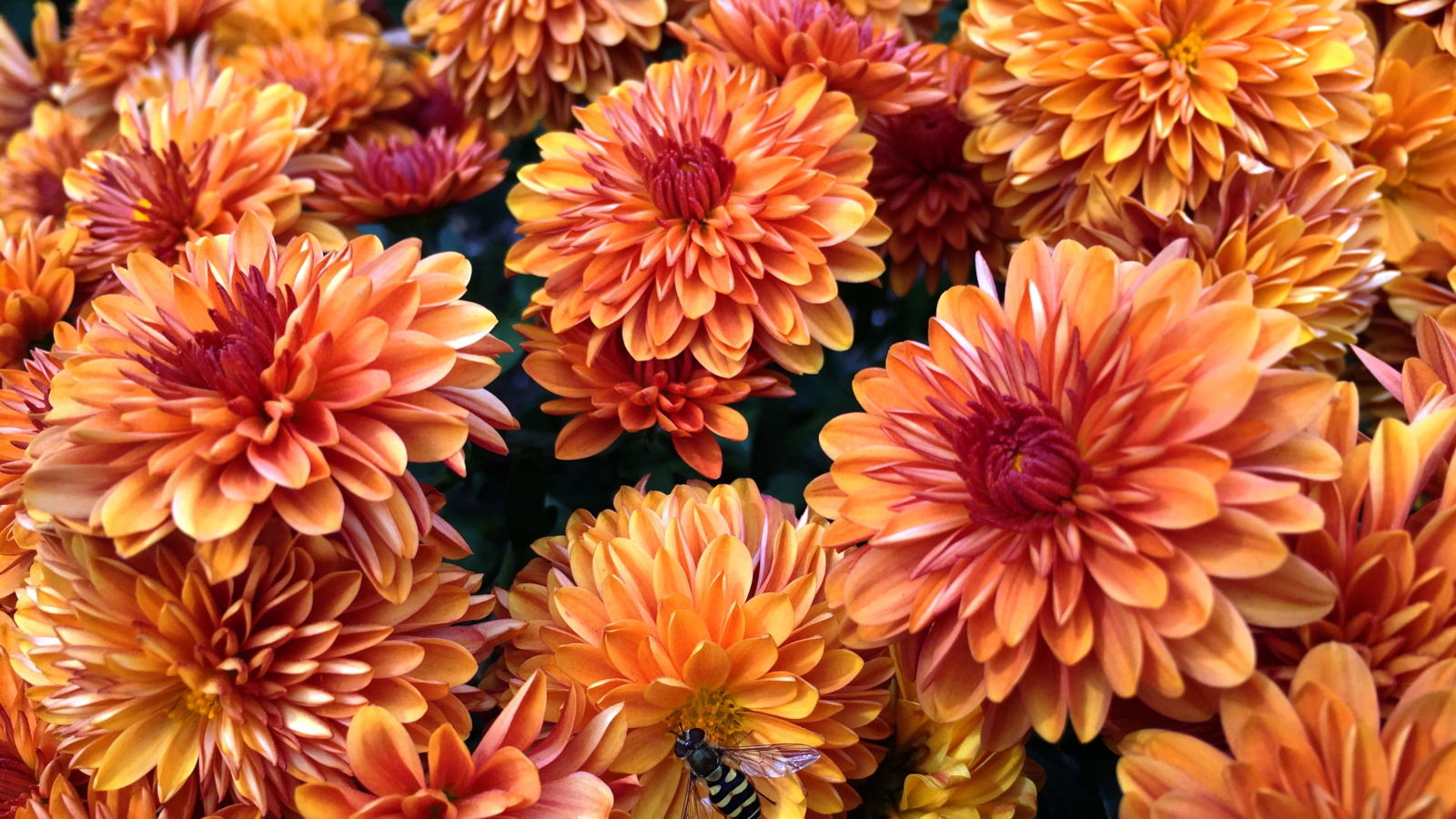
In certain regions, knowing how to winterize mums will give your plants the best chance of surviving the cold season. Learning how to grow mums (or chrysanthemums as they are also known) will pay dividends as they continue to grow well after most other plants have slipped into dormancy. A fantastic fall flower for pots, mums bring much-needed color and interest to your yard in fall and early winter.
Mums are often referred to as hardy but there are several things that can make life difficult for your plants when it comes to surviving winter. It's especially important to protect plants from frost if you want fresh new growth to flourish in spring. You also need to establish the variety of mum you are growing as some aren't hardy.
If you live in a colder climate, or the soil in your yard is heavy and drainage is poor, you will need to protect your plants. Meanwhile in sheltered gardens mums can be cut back to the ground in fall and left in the yard.
Three expert ways to winterize mums
Chrysanthemums grow back bigger and better if you are able to nurture them through the cold season, so following this expert advice on how to winterize mums will be worth it.
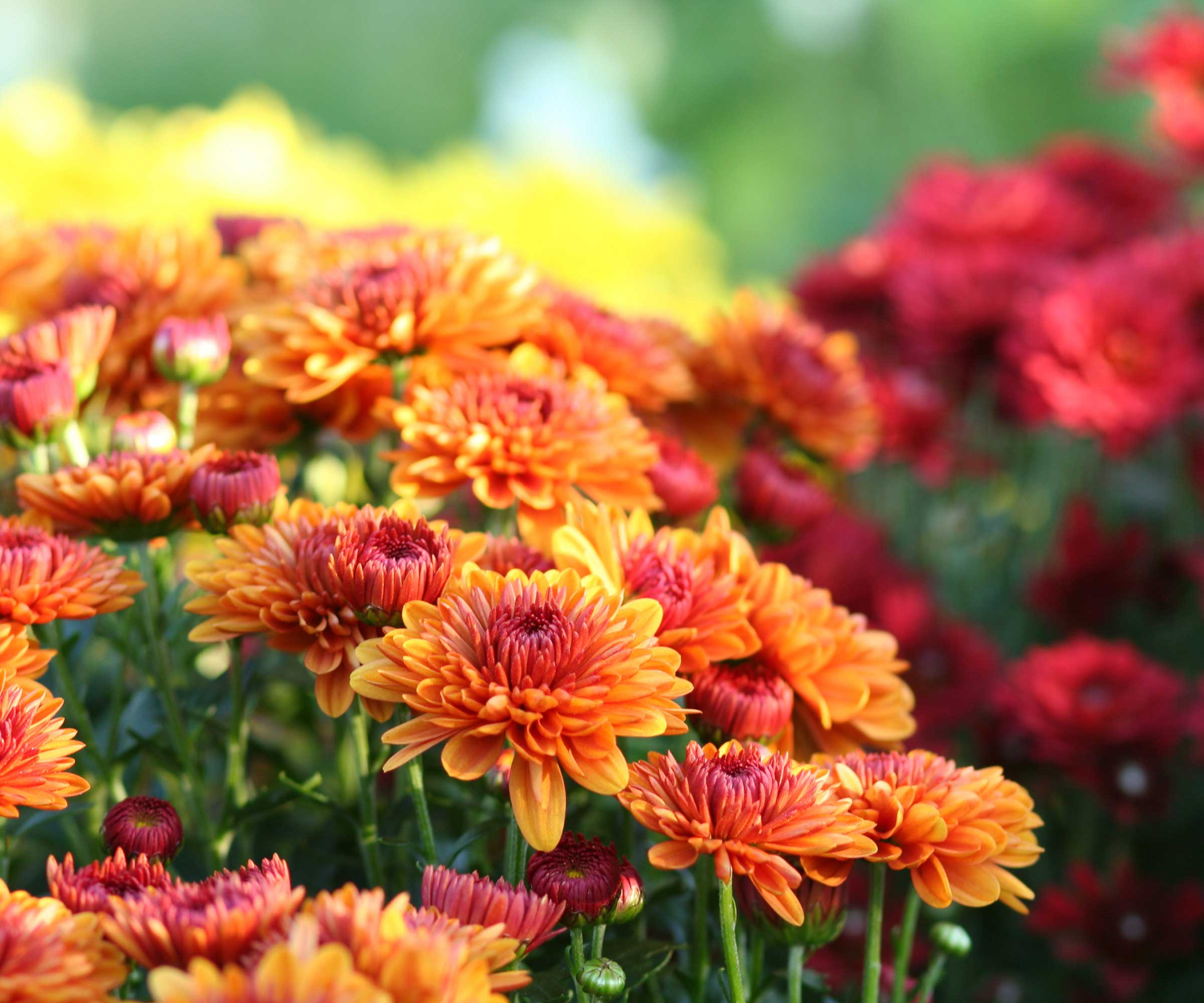
Winterizing mums planted in the ground
In USDA zones 8 and above, you can generally leave your plants alone if they’re planted in the ground. In these regions you don't tend to get an extended freeze. If by any chance frost is forecast provide some extra protection with frost protection fabric such as this one available at Amazon or an overturned cardboard box, as well as mulching. In mild areas most mums should survive outdoors if you pack mulch around the plants, as long as they're planted in well-drained soil.
Once the growing season is over in USDA Zones 4-7, you need to provide adequate winter protection for established plants growing in the ground. Wait until the first frost then it's time to start mulching, which is a key part of winterizing mums.
Layering straw or bark chippings around the base of your plants to offer them protection is a key part of protecting plants from winter. Mulching can keep the roots safe from repeat freezing and thawing during winter. It works like a protective quilt for your plants and is also good option when winterizing hostas and winterizing roses too.
Design expertise in your inbox – from inspiring decorating ideas and beautiful celebrity homes to practical gardening advice and shopping round-ups.
In spring you'll see new growth at the base of the plant. 'Once the soil warms up, mums will start a new round of growth usually at the center of the plant. Keep the top greenery on the plant through winter to protect the young center sprouts,' says Charlotte Ekker Wiggins, a Master Gardener Emeritus who is based in mid-Missouri. 'The dead tops can then be cut back to allow sun to reach the new growth.'
As soon as the weather warms up, pull away the mulch to allow the new shoots to pop up freely.
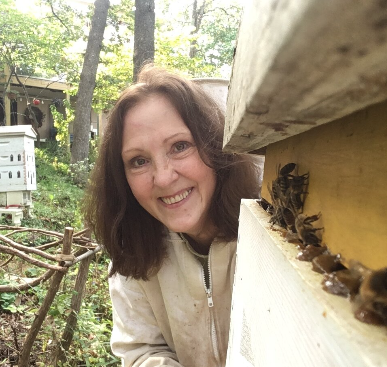
Charlotte Ekker Wiggins is a Master Gardener Emeritus who is based in mid-Missouria. She is also a beekeeper, author, gardener and founder of Bluebird Gardens.

Winterizing mums in a cold climate
Most chrysanthemum plants won’t survive heavy frosts, prolonged bad weather or waterlogged soil in cold climates, so if this is your situation plants should be lifted in fall to offer them the best protection. Wait until your mums have finished flowering, then cut top growth down to around 6 inches.
'The job of winterizing mums is easy,' says Stacie Krljanovic, who works as head groundkeeper for Patio Productions in Houston, TX. 'First, if you're using a pot, let it sit for about a week to dry out. If you have plants in the ground, dig them up and shake off any excess soil from the roots.'
Next, cover your plants with newspaper and leave them out in the sun for two days. 'This will help kill off any bugs that might be lurking in your soil or on your plants,' says Stacie. 'Then remove the newspaper and place the plants in their pots. Finally, apply an organic fungicide to protect against mold spores during storage. This will keep your plants nice and healthy until spring arrives.'
Store mums in a cold greenhouse, cold frame or other suitable place under cover, and keep the compost dry. In early spring, start watering the plants to encourage growth. Once any danger of frost has passed, you can put your mums back outside.

Stacie has been working in landscaping for 15 years and has been a lead groundkeeper for the last five, and loves it. As well as this, she works as an advisor at Patio Productions.
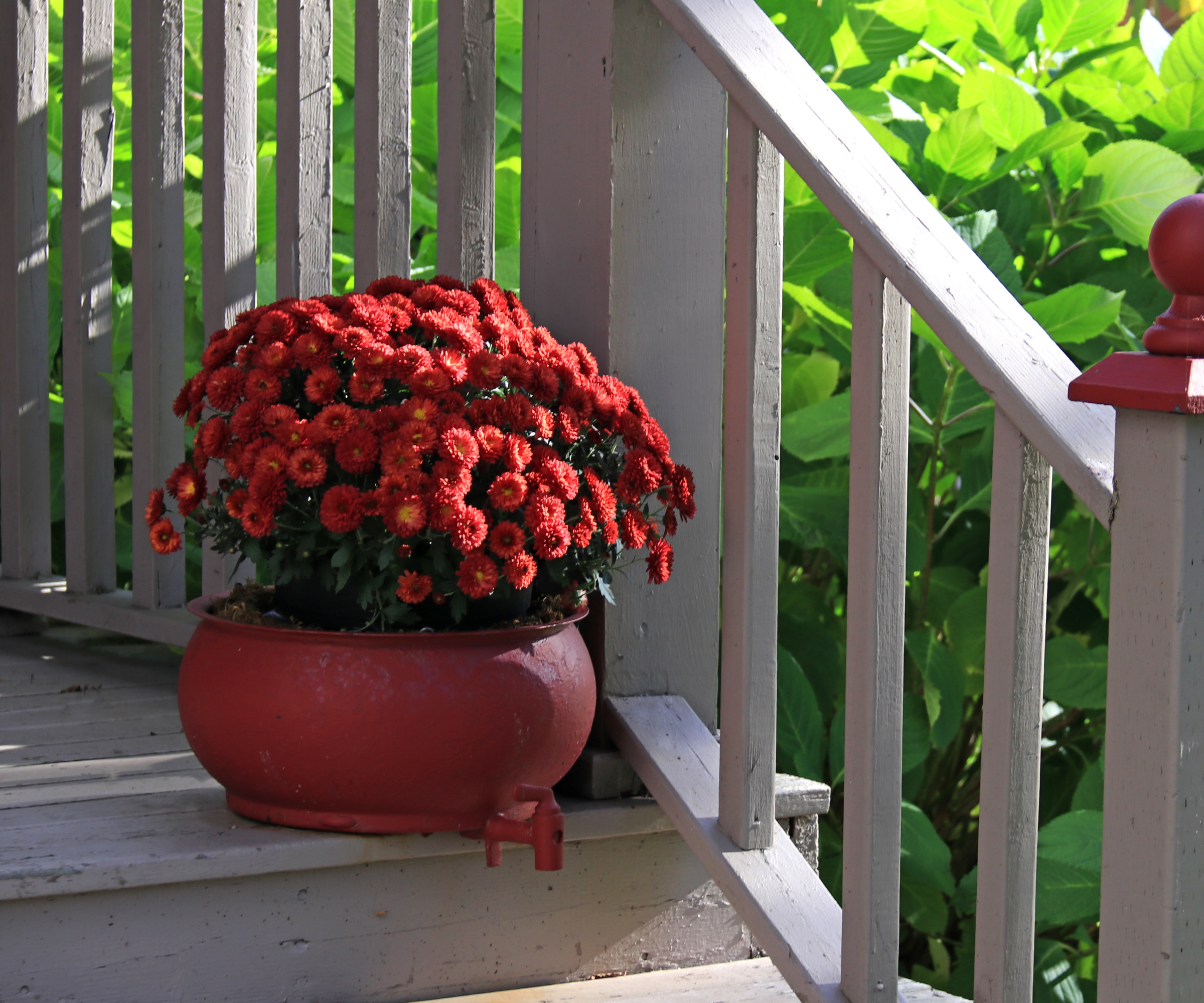
How to winterize potted mums
Potted mums won’t survive outdoors in most areas when the weather gets cold. This is because their roots are more exposed to cold temperatures than they would be if planted in the ground.
One of the easiest ways to keep your potted mums alive for the following season is to bring the plants indoors and follow the advice for caring for houseplants in winter. Cut off any dead foliage and stems leaving about 3-4 inches remaining, and bring inside to winterize, either indoors or in an unheated garage or shed between 32-50˚F (0-10˚C) so that the plant remains dormant.
Tender varieties of mums can also be grown as indoor plants or in the greenhouse. Alternatively, grow mums in pots outdoors then move them close to the house in fall, which will offer protection. You can then either move them to your greenhouse to continue flowering or cut them back to store over winter.
When spring arrives, you can harden off plants outdoors once all risk of frost has passed but remember to acclimatize your mums slowly.
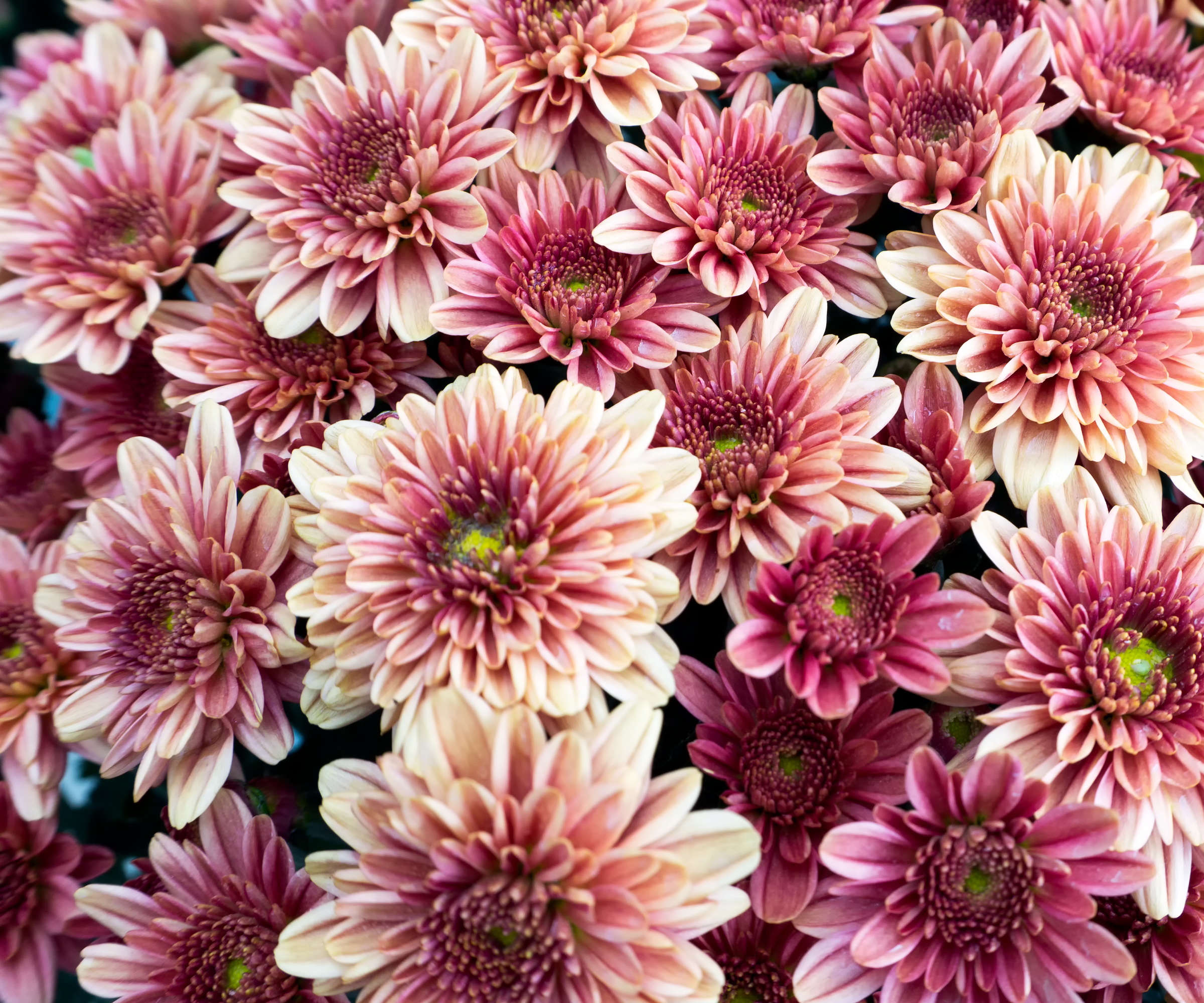
FAQs
Should mums be cut back in the fall?
If your plants are established and you're winterizing mums outdoors, leave the foliage alone. Deadheading mums in fall will keep things neat but don't trim the stems if you're overwintering them in the ground. If you wait until spring to snip off old stems it will give your mums a much better chance of surviving winter.
When it comes to protecting mums before winter takes hold, these are the key things you need to know to keep your mums blooming from one season to the next.

Lifestyle journalist Sarah Wilson writes about garden design and landscaping trends for Homes & Gardens. She has studied introductory garden and landscape design, and also has an RHS Level 2 qualification in the Principles of Plant Growth and Development. She is a regular contributor to Homes & Gardens and Livingetc. She has also written for Country Living, Country Homes & Interiors, and Modern Gardens magazines